Premium Only Content
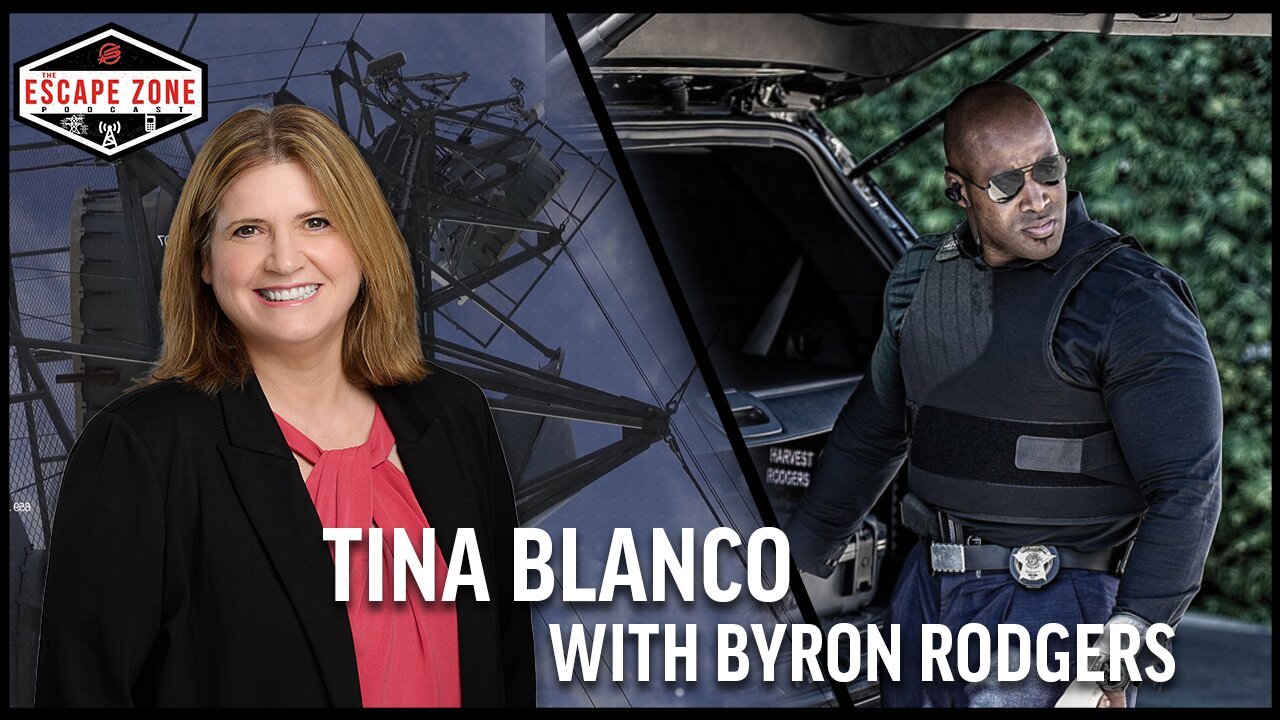
Survive What’s Coming: Elite Security Pro Byron Rogers on Grid Failure, EMPs, and Emergency Planning
🎙️ Introduction: 🚨 Survive What’s Coming: Elite Security Pro Byron Rogers on Grid Failure, EMPs, and Emergency Planning
In this powerful episode of the Escape Zone Podcast, host Tina Blanco sits down with elite security strategist and former Marine Byron Rogers to discuss what every American needs to know about surviving the next big disaster — whether it’s an earthquake, EMP attack, civil unrest, or complete grid failure.
💬 “Trusting that the government or emergency services will show up in time? That’s a mistake. You’re on your own — and you need to prepare like it.”
Free Satellite Phone with Activation http://www.sat123.com
Free Starlink Gen3 with Activation http://starlink123.com
Faraday Bags & Bulletproof Backpacks http://darkbags.com
Portable Solar Powered Generators http://www.beready123.com
From go-bags and Faraday bags to satellite phones and Starlink kits, this episode is packed with real-world survival tips. Byron, whose Bravo Research Group operates in over 80 countries, shares insider knowledge from combat zones, national disasters, and private protection work with high-net-worth clients.
If you've ever wondered:
- What happens when cell towers go down?
- Why "trust" is one of the biggest vulnerabilities in modern society?
- How to turn your neighborhood into a survival coalition?
This episode has your answers — and a whole lot more.
👇 Let's dive in.
🌪️ Natural Disasters & Urban Chaos: How to Think Ahead
Tina kicks off the conversation with a grounded, relatable question: "What should the average person do when disaster strikes and the grid goes down?" Byron doesn't mince words — *“You have to think ahead. If you're reacting in the moment, you’re already too late.”*
He introduces the concept of Emergency Management Planning — a proactive mindset that involves identifying and preparing for the risks specific to your location. In California? Think wildfires and earthquakes. In the Southeast? Think hurricanes and flooding.
But natural disasters aren’t the only threat. Byron emphasizes human threats, including civil unrest, terrorism, and even human error — like the infamous San Diego power outage caused by one technician.
💡 Key takeaway: Preparation isn’t just about having supplies — it’s about doing a *personal risk assessment*:
- What threats exist where you live?
- Do you have a plan if you can't get home?
- Do you know how long you can survive without first responders?
These aren’t hypotheticals — they’re the new reality. And failing to ask these questions now could mean chaos later.
🛠️ Emergency Planning 101: The Basics Everyone Misses
Emergency preparedness isn’t just for doomsday preppers — it’s for *anyone who wants to survive*. Byron lays out a simple truth: emergencies don’t wait until you’re ready. So start now.
Here are the pillars of a basic emergency plan everyone should build:
✅ Medical Prep: Stock essential medications (especially prescriptions) and over-the-counter essentials. Byron notes most people don’t die from disasters — they die from secondary infections. Think: a small cut turns septic when you can’t access a hospital.
✅ Training Matters: Byron urges families to train *everyone* — not just the "strongest" member. “If I’m gone, my wife and nanny must know how to respond.” Teach basic medical, radio use, and even self-defense.
✅ Provisioning: Aim for 90 days of food and water, or at least the ability to filter/purify. Don't forget your pets. Store wisely and rotate supplies regularly.
✅ Cold and Hot Rally Points: Designate a rally point inside the home and one outside the city. A relative’s farm. A campsite. A safe neighborhood. When panic hits, pre-agreed locations save lives.
💡 Quick Tip: Practice your plan. Byron recommends drills every January and June. Use your satellite phones, test Starlink, simulate a “grid down” weekend.
Don’t wait for FEMA. Your survival is your responsibility.
🏠 Inside the Home: Protection, Meds, and Tools
Byron pulls no punches: “If first responders aren’t coming — and they won’t be — YOU are the first responder.” That means your home needs to become your HQ.
🏥 Medical Zones: Every home should have multiple first aid stations — not just one kit in a closet. Think living room, garage, car. Include trauma supplies, antiseptics, and over-the-counter meds.
🧰 Tools and Weapons: Byron calls them “force multipliers.” He stresses the importance of being proficient in firearms, but also emphasizes training for *everyone* in the household — including spouses, teens, and caregivers. “If they’re in the home, they have a responsibility to protect it.”
💊 Medications: Beyond prescriptions, Byron recommends having a stash of antibiotics on hand. Why? Infections, not the disasters themselves, are often the deadliest killers when hospitals are inaccessible.
🔥 Mental Readiness: This isn’t just about gear. It's about mindset. Ask: Is your family mentally prepared to secure your home? Do you know who stays and who goes? Do you have a way to enforce boundaries?
🏡 Hunkering vs. Bugging Out: Know the signs. Sometimes staying put is safer, but other times, evacuation is essential. That decision needs to be made *fast* and *without debate*.
Byron’s home is prepped like a forward operating base — not out of paranoia, but experience. Yours should be too.
🔥 Earthquakes, Fires, and Evacuations: Preparing for the Big One
California listeners — take note. Byron doesn’t sugarcoat it: massive seismic and fire threats are not a matter of “if,” but “when.” He highlights fault lines like the San Andreas and Rose Canyon that could displace thousands overnight.
🏃♂️ Evacuation Reality: When it’s time to move, it happens *fast*. You won’t get a warning. That’s why Byron stresses having:
- A pre-packed go-bag
- Multiple evacuation routes
- A plan for pets, elderly, and medications
🧭 Cold Locations: Byron explains “cold locations” — safe houses or locations *outside* the immediate disaster zone (a farm, a friend’s cabin, etc.). These should be stocked and easy to reach.
🌫️ The 24-Hour Rule: Most experts agree: in any large-scale disaster, society starts to unravel within 24 hours. If first responders are busy or unreachable, looting and lawlessness begin. Byron calls this the “go or stay” window — decide quickly and don’t second guess.
🚗 Grid Down Scenarios: When the power fails, so does communication. Byron describes drills where his team trains to bug out from urban centers, operating under grid-down conditions using satellite comms, Starlink, and solar generators.
This isn’t theoretical — Byron’s trained for it. And in this episode, he urges you to train for it too.
📡 Why Cell Towers Fail and How to Stay Connected
When disasters hit, the first thing to go is often *communication*. Tina recounts a moment when human error took out San Diego’s grid for 24 hours — not from an earthquake or cyberattack, but a utility worker’s mistake.
📉 The Cell Network Collapse: Byron breaks it down:
- Most towers can only handle ~1,000 simultaneous calls
- During emergencies, *everyone* tries to call
- Result: the towers crash
💬 “One tower fails, and the panic spreads. Families can’t reach each other. The grid is jammed. You’re cut off.”
🛰️ The Satellite Solution:
This is where Byron says gear from companies like http://sat123.com becomes *mission-critical*:
- Iridium Satellite Phones operate above the cellular grid
- Garmin devices can send GPS-based texts in remote areas
- Starlink kits enable full-scale internet from virtually anywhere
☀️ Powering It All: When the grid fails, don’t rely on wall outlets. Use:
- Solar-powered generators
- Rechargeable battery packs
- Faraday bags to protect key electronics from EMP attacks
🔌 Practice, Don’t Panic: Byron’s family runs communication drills *twice a year* to rehearse real emergency response using satellite phones and Starlink. That way, no one’s fumbling when time matters most.
“Without comms, you’re just waiting. With comms, you’re in control.”
🛰️ Satellite Tech & Starlink: Staying Online When It Matters Most
In the age of grid failures, cyberattacks, and cascading blackouts, connectivity = survival. Byron and Tina spotlight one of the most powerful tools in the preparedness toolbox: Starlink.
📶 Why Starlink Changes Everything:
- It’s compact (under 10 lbs total)
- It runs off solar or small battery banks
- It works *anywhere* on the planet with clear sky access
Tina holds up the latest Starlink unit during the episode and shares how she’s using it to stay connected even while “off-grid” for two months in the desert. Byron is impressed — and thrilled to test his own.
💻 Real-World Use Cases:
- Set up a mobile command post in a crisis
- Maintain your remote business or job even while bugged out
- Stay informed with real-time situational awareness
⚙️ Minimal Setup, Maximum Reach:
Just pair your Starlink dish with a small solar generator, and you're live. Add a satellite phone and Faraday bag, and your comms resilience jumps 10x.
💬 “People think of Wi-Fi as a luxury. In a disaster, it’s your lifeline.”
Tina reminds listeners: “With Starlink, a power bank, and a Faraday bag — you have a mobile office that works anywhere. Period.”
This is how you stay *effective*, even when the grid collapses.
🎒 Go Bags, Bug-Out Spots, and Neighborhood Security
Byron shares his go-to strategy for long-term survival: layered redundancy — not just for gear, but for people and places.
🎒 The Go Bag Essentials:
Every family member should have a go bag ready. Byron’s includes:
- Satellite phone & charger
- Water filtration straw
- 90 days of freeze-dried food
- Medical supplies
- Tactical flashlight
- USB power bank
- Firestarter & thermal blanket
🌵 Buried Caches:
Tina reveals she’s stashed backup supplies in a hidden desert location near Las Vegas — water filter, flashlight, food, and solar gear. Byron praises this foresight as “next-level smart.”
🏕️ Bug-Out Locations:
Cold positions (farms, cabins, campsites) offer safe zones if cities become unsafe. Byron emphasizes keeping them stocked and rotating supplies every few months.
🧱 Neighborhood Security:
Byron says it’s time to know your neighbors. Forming a local safety coalition can be the difference between chaos and community:
- Know who’s trained
- Share radios
- Rotate security watches
- Set rally points and passwords
💬 “In a real disaster, mobs will do what mobs do. You can’t defend alone. Build your team now.”
Preparedness isn’t just personal — it’s *tribal*.
👥 Family Drills & Community Planning
What separates *planners* from *survivors*? Practice.
Byron emphasizes the need to rehearse disaster plans just like fire drills. Tina shares how her family runs satellite communication drills twice a year, calling each other using satellite phones and rehearsing what to do in a regional or national outage.
📆 Two Key Dates to Train:
- January 2nd: Start the year prepared
- June 1st: Kick off summer with readiness
📱 Drill Scenarios Include:
- Going outside to get signal with a sat phone
- Calling a designated out-of-state contact
- Practicing message relays and location check-ins
- Testing backup power supplies and solar kits
🌐 Why Drills Matter:
In 2017 during Hurricane Maria, Tina witnessed firsthand the emotional toll of not being able to contact loved ones. Parents wept in her office, desperate for news. That changed her mission forever.
💬 “You don’t want to learn how to use your gear in a disaster. Practice now.”
🛡️ Community Intel:
Byron recommends families appoint someone *outside the state* as a contact relay hub. If local cell towers go down, everyone calls that one person, who keeps the family linked.
Practice like it’s real — because one day, it will be.
🌍 The Global Perspective: What Byron Sees Worldwide
Byron isn’t just speculating — he’s operated in over 80 countries with Bravo Research Group. From executive protection to emergency evacuations, what he’s seen confirms one thing:
💬 “The grid is fragile. Society is a handshake away from chaos.”
🛫 Global Hot Zones:
Byron and his team have evacuated Americans and foreign nationals from:
- War zones
- Natural disasters
- Civil uprisings
His message? *What happens abroad can and will happen here — if you’re not prepared.*
🧠 Cultural Wake-Up Call:
He warns Americans: “We’ve lived with convenience for so long that we’ve mistaken it for safety.” Meanwhile, warlords, gangs, and organized networks prepare for collapse scenarios in their own way.
🌎 Worldwide Lessons Learned:
- Haiti: Feudalism and warlordism returned in days
- Mexico: “Safer” vacation areas aren’t always safe
- Eastern Europe: Mass evacuations require speed, not gear
🏠 Stateside Planning:
Byron emphasizes that the *real advantage* of Americans isn’t gear — it’s access to early intel, tools, and the freedom to prepare in advance.
Your greatest weapon is foresight. Use it.
🛡️ Final Tips: Gear, Mental Prep, and Staying Alive
As the episode winds down, Byron and Tina leave listeners with powerful closing advice that ties everything together.
🧠 Mindset Over Muscle:
Byron says mindset is everything. It’s not about having the best gear — it’s about being *mentally ready to act*. He urges listeners to face fear, lean into discomfort, and take responsibility for themselves and their families.
🎒 Gear to Own Now:
- Satellite phones & kits http://sat123.com
- Faraday bags for critical gear http://darkbags.com
- Solar generators http://beready123.com
- Medical kits with antibiotics
- Starlink for mobile internet access http://starlink123.com
- Personal security training (even just basics)
⚡ The EMP Threat:
Tina and Byron both agree: an EMP (Electromagnetic Pulse) attack is one of the greatest underdiscussed risks. It's silent, fast, and devastating. That’s why all electronics need to be EMP-shielded in Faraday gear.
🧘♀️ Reduce Digital Overload:
Tina shares she’s going fully off-grid for two months — *not* to escape, but to reconnect. She’ll still record episodes using Starlink, but minimize exposure to EMF, 5G, and unnecessary stress.
💬 “It’s not about fear. It’s about freedom. Control what you can and release what you can’t.”
Preparedness isn't a trend. It’s a way of life.
📞 How to Reach Byron Rogers & Final Words
If this episode lit a fire under you — good. That’s the goal. Byron Rogers doesn’t just talk the talk — he leads teams, builds plans, and helps families and executives prepare for the worst, so they can live their best.
🌐 Work with Byron:
- Website: http://bravoresearchgroup.com
- Services: Executive protection, in-home vulnerability assessments, global security response
- Reach out for: Vacation risk assessments, private protection, emergency planning consultations
💬 “We’re not just gear guys. We’re mindset guys. We build capability and confidence.”
🙏 Final Thanks:
Tina thanks Byron for his service, insights, and continued partnership in helping people live safely and prepared. She reminds listeners that preparation is a form of love — for your family, your community, and yourself.
📢 Get Equipped:
Want to take action today?
- Visit http://sat123.com to get your free satellite phone with plan
- Protect your electronics with gear from http://darkbacks.com
- Train your team, prepare your family, and revisit this RS often
🎧 Thanks for listening to the Escape Zone Podcast. Stay safe, stay smart — and stay ready.
-
 43:36
43:36
The Escape Zone
5 months ago $0.19 earnedBiohack Your Body: Unlocking Cold Plunge Therapy Benefits with Dr Basima
3.38K1 -
 LIVE
LIVE
SpartakusLIVE
13 hours agoTOXIC Solos on ARC Raiders || Friday Night HYPE - WZ or Redsec Later?
1,097 watching -
 2:15:42
2:15:42
TheSaltyCracker
5 hours agoWoke is DEAD ReeEEStream 11-07-25
100K176 -
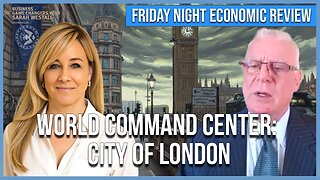 1:29:13
1:29:13
Sarah Westall
4 hours agoThe City of London: Infiltration, Intimidation & Centralized Power w/ Mike Harris
29.1K11 -
 10:14:18
10:14:18
Dr Disrespect
15 hours ago🔴LIVE - DR DISRESPECT - ARC RAIDERS - AGAINST ALL DANGER
185K25 -
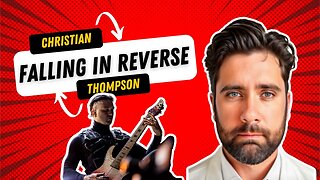 32:09
32:09
ThisIsDeLaCruz
1 day ago $1.09 earnedFalling In Reverse: Christian Thompson’s Stage Tech Revealed
25.4K4 -
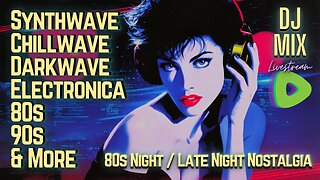
SynthTrax & DJ Cheezus Livestreams
1 day agoFriday Night Synthwave 80s 90s Electronica and more DJ MIX Livestream 80s Night / Late Night Nostalgia
37.1K5 -
 4:05:52
4:05:52
Nerdrotic
10 hours ago $13.10 earnedHollywood REGRET | Disney's Predator | The Feminist Avengers - Friday Night Tights 379
61.7K17 -
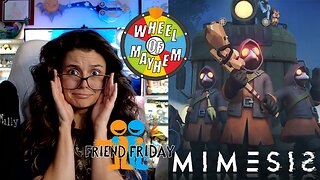 2:36:22
2:36:22
Mally_Mouse
4 days agoFriend Friday!! 🎉 - Let's Play! - MIMESIS
29.6K3 -
 41:20
41:20
MattMorseTV
6 hours ago $23.01 earned🔴Schumer just BACKSTABBED his OWN VOTERS. 🔴
37.2K78